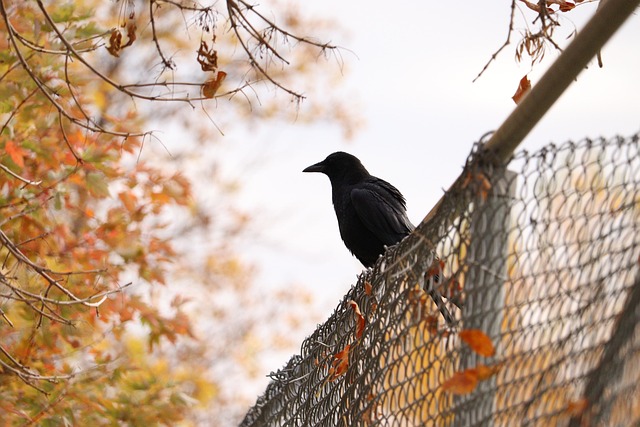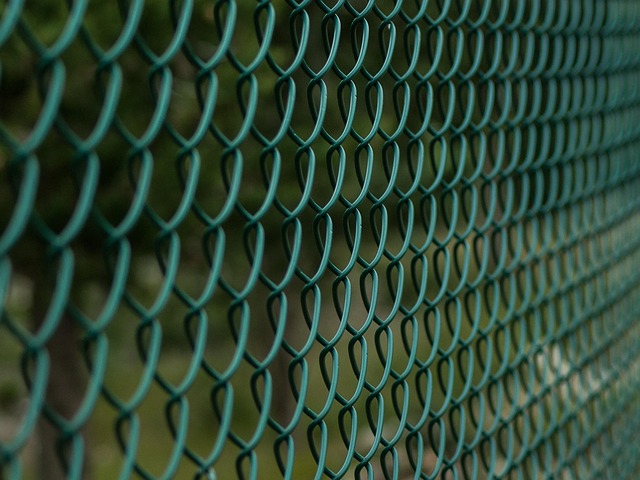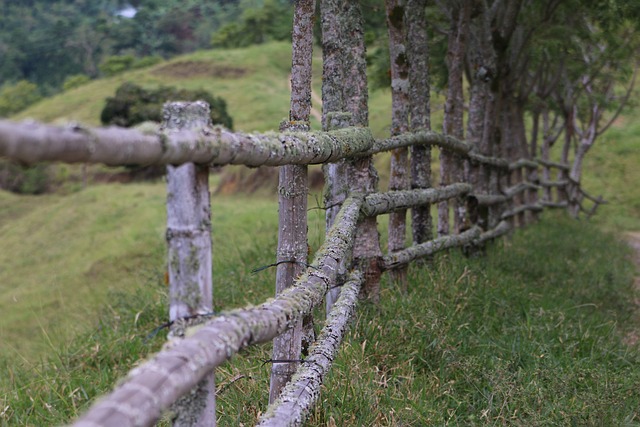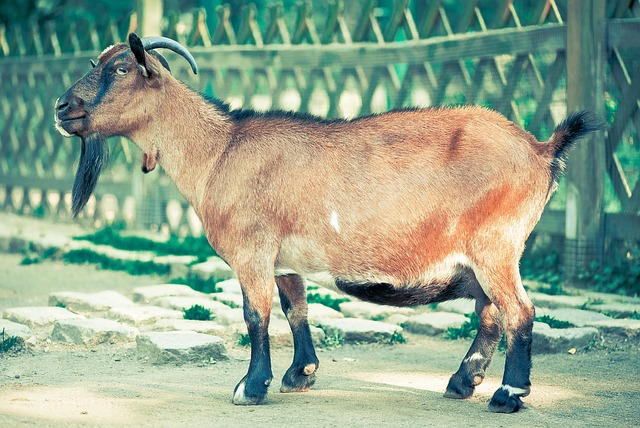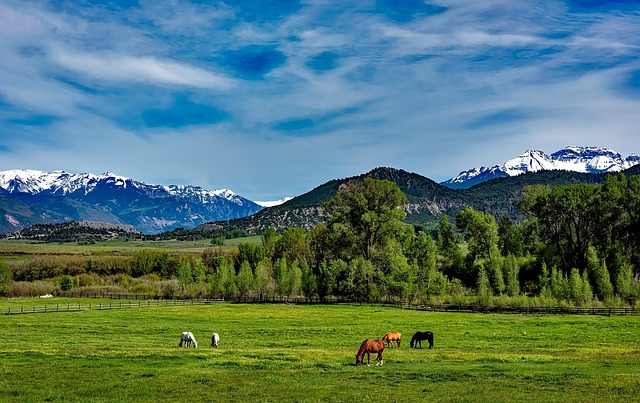Ontario farmers have diverse farm fencing options to meet various needs. Wood posts offer budget-fri…….
Category: Farm Fencing
Farm Fencing: Securing the Backbone of Agricultural Landscapes
Introduction
In the vast expanse of agricultural landscapes, farm fencing stands as a cornerstone, delineating fields, protecting crops, and fostering efficient land management. This robust and versatile system of barriers has evolved over centuries, adapting to technological advancements, environmental changes, and shifting agricultural practices. From traditional materials like wood and wire to modern innovations in plastic and metal, farm fencing is an integral part of the global farming fabric.
This comprehensive article delves into the multifaceted world of farm fencing, exploring its historical roots, international impact, economic implications, technological enhancements, regulatory frameworks, and future prospects. By examining various aspects, we aim to provide a holistic understanding of this essential component in modern agriculture, offering insights that can shape its ongoing development and utilization.
Understanding Farm Fencing: A Historical Perspective
Farm fencing, at its core, is a structural system designed to enclose agricultural areas, providing physical barriers against unwanted intrusions, such as stray animals or pests. It serves multiple purposes, including:
- Crop Protection: Preventing damage from wild animals and insects.
- Livestock Management: Containing livestock within designated areas for efficient farming practices.
- Landmark Definition: Delimiting field boundaries, which is crucial for land surveying and ownership rights.
- Privacy and Security: Offering a sense of privacy for farmers and their operations.
Historically, the concept of farm fencing dates back to ancient civilizations where simple natural barriers like stone walls, hedges, and dense forests were used to protect crops and livestock. However, the modern farm fence as we know it today began to take shape during the Agricultural Revolution in the 18th and 19th centuries. The introduction of mechanized farming techniques led to a need for more efficient and durable fencing systems.
The late 19th century saw the widespread adoption of barbed wire, which revolutionized fencing by providing a cost-effective and easily installable alternative to traditional wooden barriers. This innovation enabled farmers to enclose larger areas, facilitating the intensification of agricultural practices. Over time, various materials and designs emerged, catering to specific agricultural needs and regional preferences.
Global Impact and Trends
Farm fencing is a universal necessity across diverse agricultural landscapes, but its implementation varies significantly from region to region, influenced by local climates, terrains, and farming traditions. Here’s an overview of some key global trends:
- North America: Known for its extensive cattle ranches, North America favors high-tension wire fences due to their strength and longevity. Electric fencing is also prevalent for livestock management.
- Europe: European farms often employ a mix of wooden posts with wire or plastic mesh fences, reflecting the region’s diverse agricultural practices and moderate climates.
- Asia: With vast rice paddies and intensive farming, Asia utilizes a variety of materials, including bamboo, wood, and modern PVC fencing, to meet specific crop protection needs.
- Australia: The harsh Australian outback demands robust and durable fences, often made from steel or reinforced plastic, to withstand extreme weather conditions and protect crops from feral animals.
These regional variations highlight the adaptability and versatility of farm fencing, catering to unique agricultural challenges and opportunities worldwide.
Economic Considerations: Market Dynamics and Investment Patterns
The global farm fencing market is influenced by several economic factors, creating a dynamic industry with varying investment patterns:
- Market Size: According to a 2021 report, the global farm fencing market was valued at approximately $6.5 billion and is projected to grow at a CAGR of around 4% between 2022 and 2030. This growth is driven by factors such as rising global population, increasing demand for food, and the need for efficient land management.
- Material Preferences: The market witnesses fluctuations in material preferences due to cost, durability, and environmental concerns. For instance, while traditional steel fencing remains popular, there’s a growing trend towards eco-friendly options like recycled plastic and biodegradable materials.
- Investment Trends: Farmers and agricultural businesses invest in farm fencing for several reasons:
- Crop Protection: Investing in robust fences to safeguard high-value crops from pests and wildlife damage.
- Livestock Management: Upgrading fences to facilitate efficient herd management and reduce straying.
- Land Boundary Disputes: Implementing clearly defined fences to avoid legal issues related to land boundaries.
- Regional Disparities: Economic disparities among regions impact fencing investments. Developing countries may opt for more affordable and readily available materials, while developed nations invest in advanced technologies and longer-lasting solutions.
Technological Advancements: Enhancing Farm Fencing
Technological innovations have revolutionized farm fencing, offering improved durability, efficiency, and environmental friendliness. Some notable advancements include:
- Electric Fencing: This technology uses low-voltage electricity to deter animals from crossing the fence line. It is widely used for livestock management and provides a humane alternative to more traditional methods. Modern electric fencing systems are easier to install and offer precise control over voltage levels.
- Smart Fences: Integrating sensors, cameras, and connectivity into farm fences enables real-time monitoring of animal movement, crop health, and fence integrity. These smart systems can detect intrusions, predict potential issues, and provide valuable data for farmers.
- Biomimicry and Biodegradable Materials: Inspired by nature, researchers are developing fencing materials that mimic natural barriers. Biodegradable plastics, for example, offer similar performance to traditional materials but with reduced environmental impact.
- Automated Fence Adjustments: Some advanced systems can automatically adjust fence tension based on weather conditions, ensuring optimal performance and longevity.
Regulatory Frameworks: Ensuring Safety and Standards
Farm fencing is subject to various regulatory frameworks worldwide, aimed at ensuring safety, durability, and compliance with agricultural standards. These regulations vary across countries and regions but generally include:
- Material Standards: Specifying minimum requirements for materials used in farm fencing to ensure strength, longevity, and resistance to environmental factors.
- Safety Guidelines: Establishing guidelines for electric fencing systems to protect users from electrical hazards.
- Environmental Regulations: Implementing rules to minimize the ecological impact of fencing construction and disposal.
- Land Survey Standards: Defining standards for fence placement and marking to accurately delimit land boundaries.
Future Prospects: Sustainable and Smart Farming
As agriculture continues to evolve, farm fencing is expected to play an increasingly crucial role in sustainable and smart farming practices. Here’s a glimpse into the future:
- Sustainable Materials: The demand for environmentally friendly materials will grow, with innovations like biodegradable plastics, recycled metals, and natural fibers gaining prominence.
- Integration with IoT (Internet of Things): Farm fences equipped with sensors and connectivity will become more common, enabling farmers to monitor and optimize their operations remotely.
- AI-Powered Analysis: Artificial intelligence can analyze fence data to predict maintenance needs, identify potential security breaches, and enhance overall farm management.
- Vertical Farming: In urban settings, vertical farming techniques may require specialized fencing systems to support crop growth in limited spaces while ensuring security and pest control.
- Global Collaboration: Sharing knowledge and best practices among farmers worldwide will foster innovation and improve fencing technologies for diverse agricultural challenges.
Conclusion
Farm fencing is more than just a physical barrier; it is an integral component of modern agriculture, shaping the way farmers manage their land and resources. From historical roots to technological advancements, its evolution reflects humanity’s ever-growing need for efficient, sustainable, and secure farming practices. As we look towards the future, ongoing research, innovation, and global collaboration will further enhance farm fencing technologies, contributing to the resilience and productivity of agricultural systems worldwide.
No-Climb Fences: Safeguarding Equines on Ontario Farms
Ontario's farm fencing regulations prioritize equine safety with no-climb horse fence standards…….
Effective Livestock Fencing Solutions for Ontario Farms
Ontario farm fences require understanding local regulations and best practices for animal safety, en…….
Secure Entrances: Fence Right Inc’s Durable Gates for Ontario Farms
Ontario farmers trust Fence Right Inc for durable, aesthetically pleasing field gates that enhance c…….
Secure Your Farm: Choose Sturdy Ontario Fencing Experts
Fencing is essential for Ontario farmers, with types tailored to livestock and terrain. Select provi…….
Automatic Gates: Ontario Farms’ New Convenience with Fence Right Inc
Fence Right Inc. automates farm gates in Ontario, revolutionizing farming with enhanced security and…….
Ranch Fencing: Ontario’s Expert Solution for Aesthetics and Function
Ranch fencing in Ontario, provided by companies like Fence Right Inc, is a popular choice for its ae…….
Ontario Farm Fencing: Types, Installation & Benefits Guide
Ontario farms offer diverse fencing needs, from traditional to modern designs. Installation starts w…….
Secure Farm Access: Top-Tier Fencing for Property Protection
Farm fencing is a critical component in agriculture, serving property delineation, livestock contain…….
Secure Your Farm: Top Fencing Options for Ultimate Protection
Assess property needs: animal containment, access points, environmental conditions. Choose material…….



